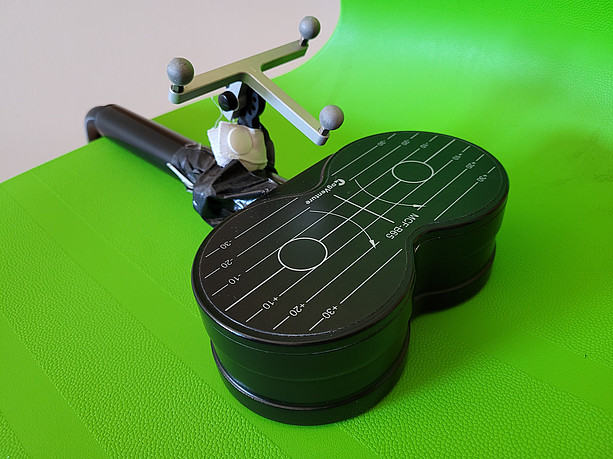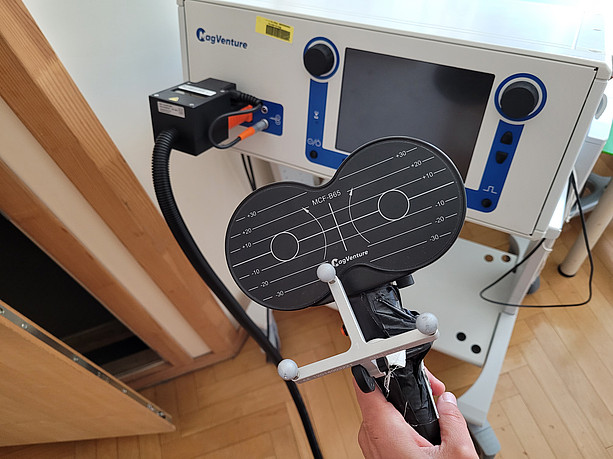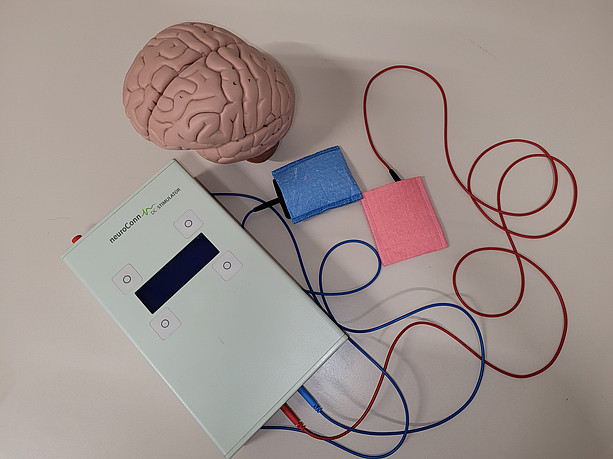Description
Non-invasive brain stimulation techniques (NIGS) stimulate the brain from the outside. Transcranial magnetic stimulation (TMS) and transcranial electrical stimulation (tES) are the two most important methods. In TMS, a rapidly alternating magnetic field is applied to the head, which induces an electric field in the superficial layers of the cerebral cortex that stimulates the neurons and their fibers above the threshold. With tES, on the other hand, weak electrical currents (usually < 3 mA) are applied to the head. The current flows through the scalp and skull and can modulate the spontaneous neuronal firing rate through subthreshold changes in resting membrane potentials.
NIGS techniques are mainly used in research to clarify the causal role of certain areas of the brain. They can also be used therapeutically to induce neuroplastic changes in the brain.
Equipment
- The MAGPRO X100 TMS stimulator can deliver single and double pulses through the C-B60 dipple coil and repetitive stimulation with the MCF-B65 dual coil with static cooling. The maximum repetition rate is up to 250 pps, with monophasic, biphasic and biphasic burst pulses (theta burst).
- Localite neuronavigation system and Polaris VICRA optical tracking system for MR-less and MR-based tracking during TMS stimulation.
- NeuroConn DC-STIMULATOR PLUS, a programmable single-channel stimulator for transcranial direct current stimulation (tDCS) and rhythmic alternation at a single frequency with transcranial alternating current stimulation (tACS) or at multiple alternating frequencies between 0.1 and 640 Hz with transcranial random noise stimulation (tRNS).
- Soterix 4 x 1 high-definition tES adapter for converting a 2-channel tDCS stimulator into an HD tDCS device.
Accessories:
Tracking tools (pointer, subject reference tracker, calibration plate, TMS tracker), rectangular and ring-shaped tES electrodes and EMG electrodes.


